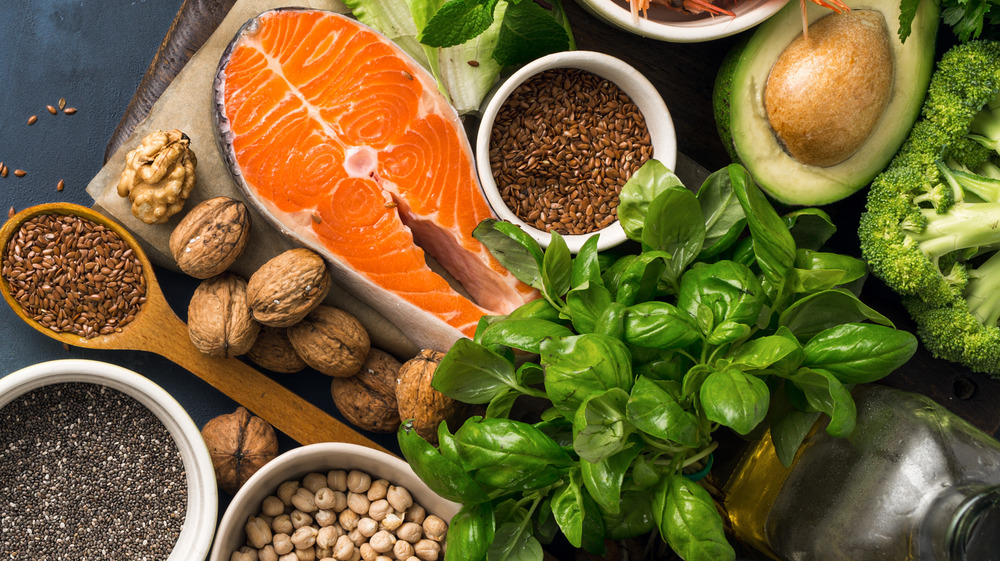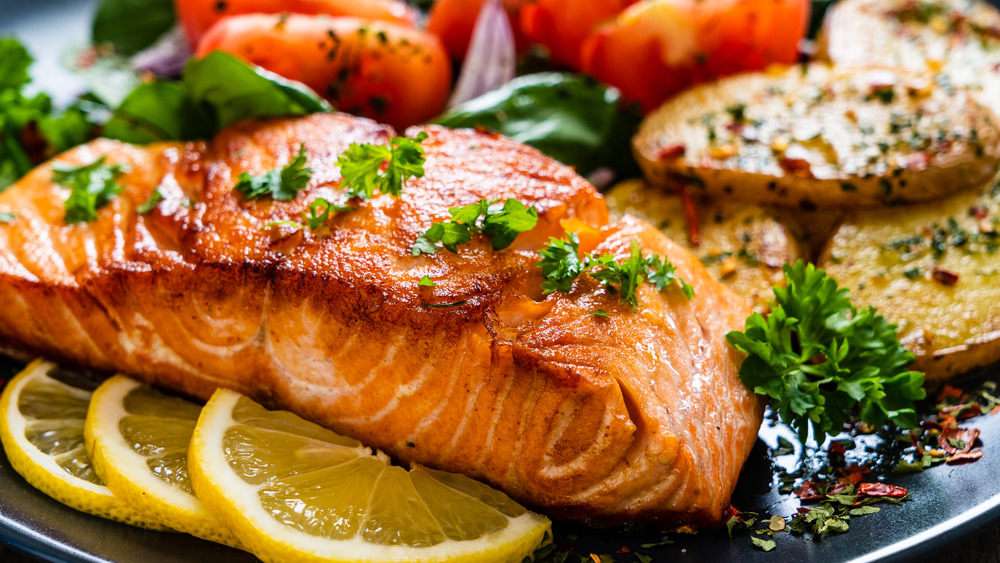The Big Difference Between Omega-3s And Omega-6s
If you've heard about healthy fats, you've likely heard about Omega-3s and Omega-6 fats as the two fat sources that we need for optimal health. However, there are significant differences between the two types of fatty acids. While both are critical to our diet, generally speaking, Omega-6s are easier to eat in a standard diet, while Omega-3s require a bit more focus on healthy foods in order to get enough.
Omega-3 fatty acids—a polyunsaturated fat—are important for our health, with benefits including reducing certain cancer risks; improving symptoms of anxiety, depression, and ADHD; and decreasing inflammation in the body. Our bodies can't produce the three types of Omega-3s—ALA, DHA, and EPA—on their own, so we need to have them in our diet. Unfortunately, the standard American diet (or Western style of eating) typically skips foods rich in Omega-3s (via Healthline).
Omega-6 fatty acids are also important for overall health and aren't produced in our bodies, but unlike Omega-3s, they are found in a typical Western diet. They're found in vegetable oils, so most processed foods will contain at least some Omega-6 fatty acids, and on average, Harvard Health Publishing reports that Americans eat 10 times the amount of Omega-6 fatty acids as they do Omega-3s.
What is the right way to eat Omega-3 and Omega-6s?
To eat a diet that's rich in Omega-3 fatty acids, add more fatty fish like salmon to your diet. Walnuts, flaxseeds, and chia seeds are also great sources. If you struggle to eat enough of these foods on a regular basis, consider a fish oil supplement, but as with all supplements, look for a high-quality one that's well-researched.
When it comes to adding Omega-6 fats to your diet, don't worry as much: You're likely eating more than enough already, assuming you're not following a low-fat diet. The goal is to eat a ratio of four to one Omega-6 to Omega-3s, which can be hard if your diet is loaded with Omega-6s. For a healthier balance, you can skip the fried foods and processed higher-fat snacks and start to shift to healthier options that contain Omega-6s instead, like olive oil, while adding Omega-3s to your diet, in order to bring your ratio into balance (via Shape).


